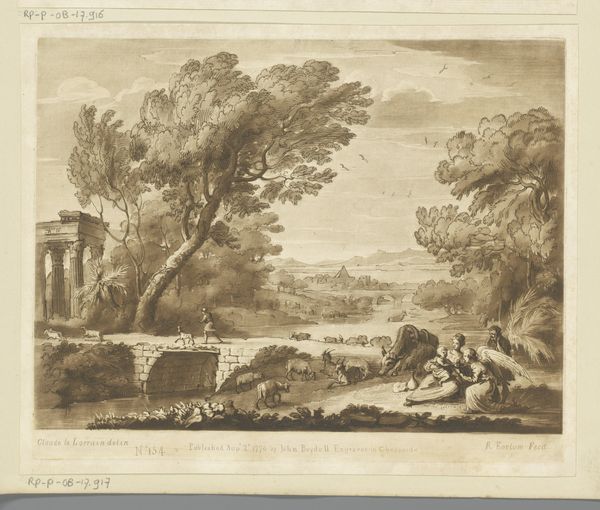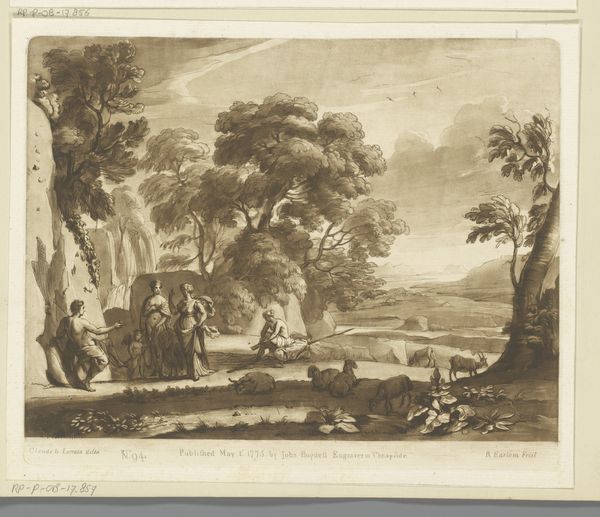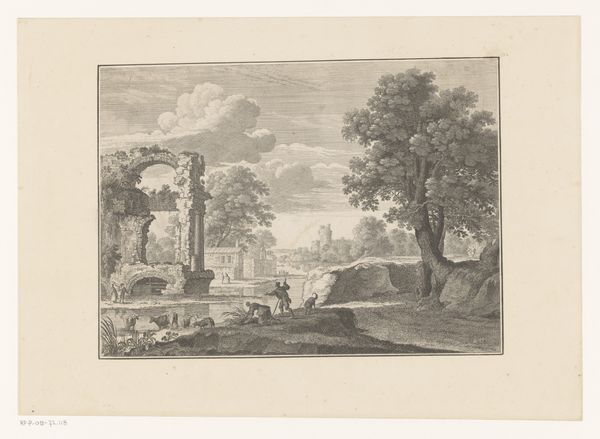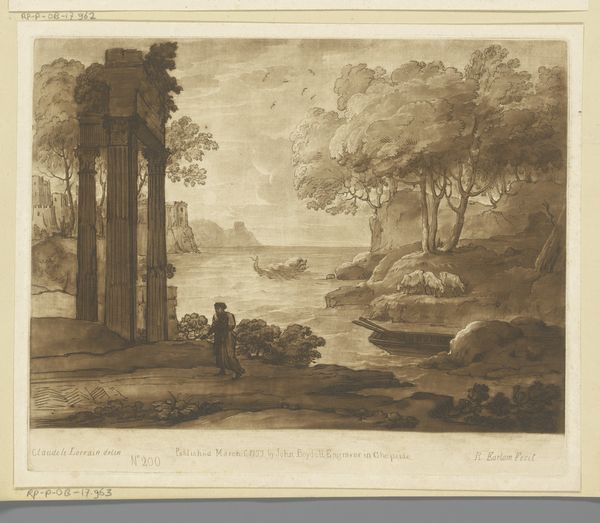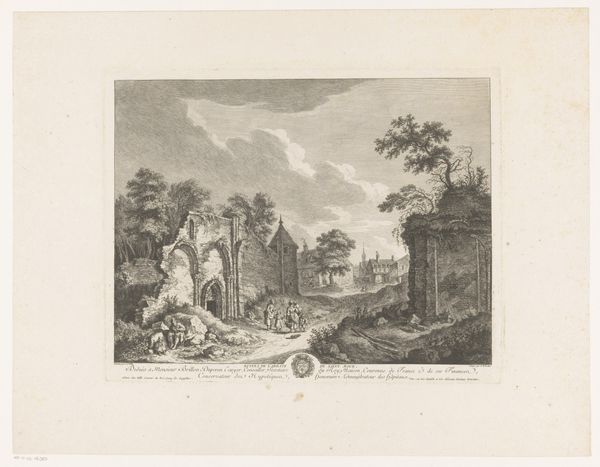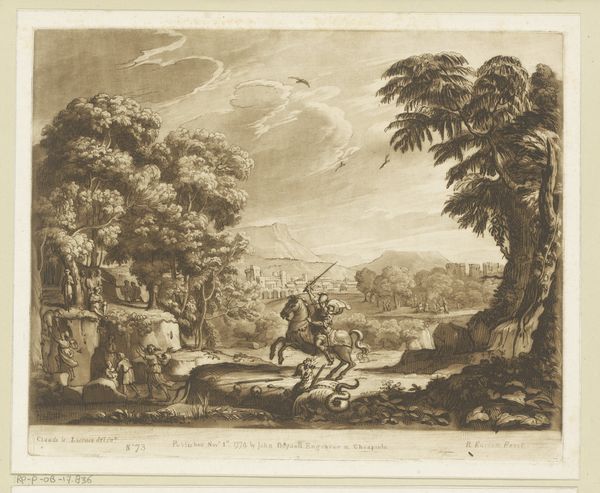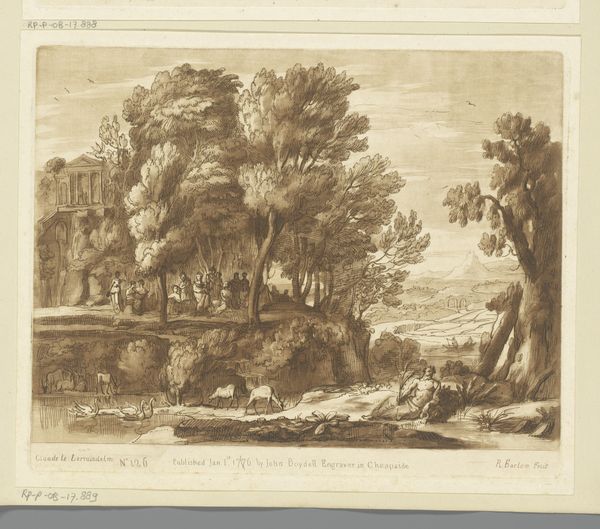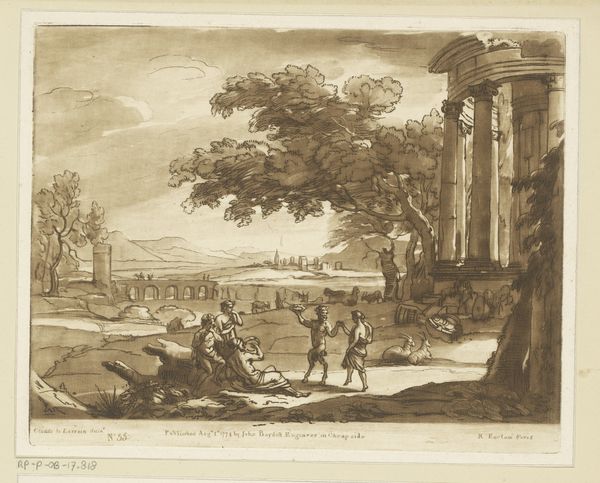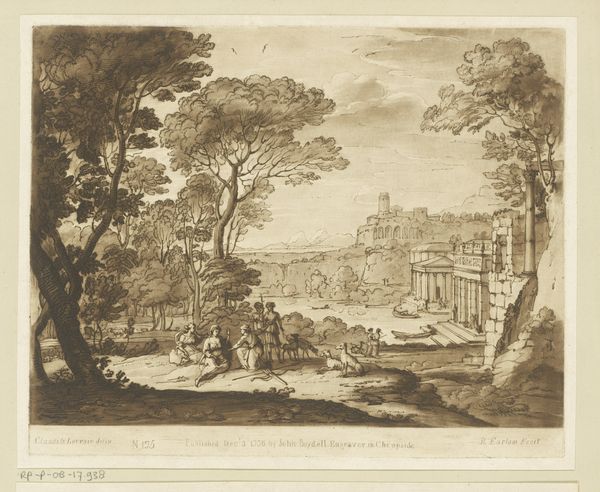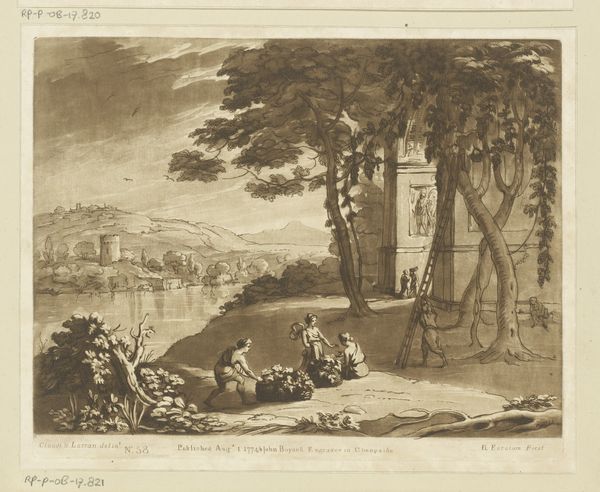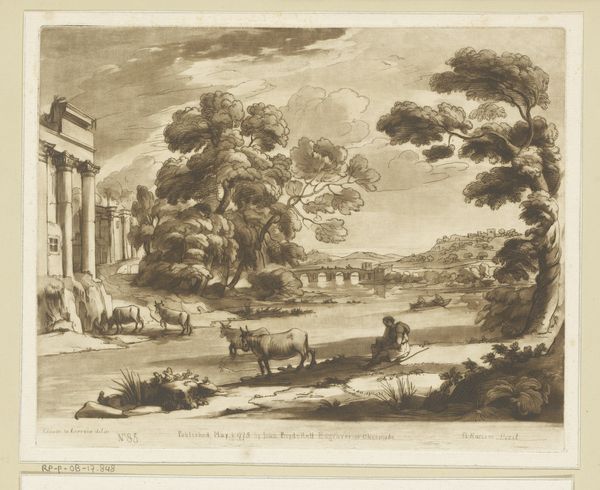
#
pencil drawn
#
aged paper
#
toned paper
#
light pencil work
#
pencil sketch
#
sketch book
#
personal sketchbook
#
coloured pencil
#
watercolour illustration
#
watercolor
Dimensions: height 208 mm, width 258 mm
Copyright: Rijks Museum: Open Domain
Curator: We’re looking at a work titled "Coastal Landscape with Shepherd, Shepherdess and Ruin," potentially from 1774. The artist is Richard Earlom, and it resides here at the Rijksmuseum. What's your immediate impression? Editor: It feels… nostalgic. Melancholy even. The sepia tones create a sense of looking back, a yearning for a lost era of pastoral simplicity, a pre-industrial fantasy if you will. Curator: Precisely. Earlom captures an idealized past. The ruin prominently placed reminds me of the transience of empires. Think of it as a commentary on power structures – civilizations rise and fall, but perhaps there’s a beauty even in the decay. Editor: Ruins often represent something romantic. The way that ruin anchors the composition on the left is remarkable, it’s visually balanced by the drapery on the right. They're contrasting symbols - human impermanence against manufactured legacy, like a story that continues. Do you get a similar sense of balance, there? Curator: Indeed! Consider also the shepherds and shepherdesses; not laborers, but figures inhabiting a symbolic realm. We’re confronted with the social implications here; the contrast between the romanticized vision and the lived realities of those laboring on the land. Editor: Beyond that there is the tree looming above all figures, seemingly looking over all. Its grand gesture suggests to me ideas of resilience and growth through all odds. Almost an indifferent presence amidst the folly of humankind. Curator: I read it that way too, offering, a powerful image in the 18th century, rife with colonial expansion and industrial revolution. Earlom’s landscapes could be interpreted as a reaction against, or an escape from these encroaching realities. Editor: What strikes me most is the visual continuity. How he reuses those familiar symbols from classicism— ruins, pastoral figures, idealized landscapes. Yet he renders them here in pencil and watercolour, so it has this incredible ephemeral quality, like a dream slipping away. Curator: Ultimately, Earlom provokes critical contemplation, even within seemingly idyllic scenes. Editor: Yes, the sketch invites the viewers on our end, as we navigate our relationship to both past and present.
Comments
No comments
Be the first to comment and join the conversation on the ultimate creative platform.
